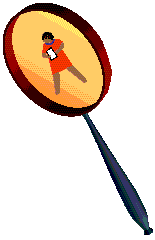By asking instead of telling, salespeople are more effective at both giving and receiving important sales information.

Recently during a sales presentation I put on for Ries Furniture, Jan Slaby, Director of Interior Design, shared with the group an interesting idea. Her insight, that salespeople should "not tell what they can ask," inspired me to write this article about the functions of probing and how salespeople can use probing to improve sales performance.
John Lawhon, who stresses that selling really takes place during the presentation, accordingly defines the salesperson's role as that of providing customers with the information they need to make the best buying decision. While providing such information is surely the salesperson's role; obtaining customer information is equally important. In fairness, it must be admitted that he certainly stresses the importance of asking questions. In fact, he insists that to prescribe without first diagnosing is malpractice not only for doctors but also for salespeople. Where we disagree is that he insists that only presenting is selling; while my view, adopted from Learning International, Inc., is that selling consists of four interdependent skills; the opening, probing, supporting, and closing.
In this article I have provided fourteen functions of asking questions. This is not to say there are only fourteen functions. That's simply the number I have put together. I feel quite certain that you can come up with other valid functions.
Functions Of Probing
1.To ask the customer's permission to probe:
Salesperson: "Mind if I ask you why you feel that way about leather?"
2.To get information (customer needs, concerns, circumstances):
Salesperson: "What would you say is the main benefit you're looking for?"
Salesperson: "What concerns do you have about putting it all together?"
Salesperson: "Will you be needing to take this with you today?"
3.To create a professional image:
Salesperson: "Just so that we put together the kind of room you're comfortable with, I'd like to ask you a few questions. How does that sound to you?"
4.To save the customer time and trouble:
Salesperson: "In order not to waste your precious time, I'd like to ask you a couple of questions. OK?"
Salesperson: "So that you won't have the kind of trouble you had the last time with delivery, let's go over our policies once again, all right?"
5.To check for understanding (your own and the customer's):
Salesperson: 'Let's see if I have this right; you're looking for three things in your next recliner... a durable fabric, a big man's chair, and something available for immediate delivery. Is that it?"
Salesperson: "To make sure you understood this Saturday's delivery, I'd like to go over one more time what you agreed to. How does that sound?"
6.To sell add-ons:
Salesperson: "What else can I help you with?"
Salesperson: "Now that you purchased your new bedroom, how do you feel about putting your present mattresses in the guest bedroom and getting the new set you really deserve?"
7.To make the customer feel important:
Salesperson: "Isn't this the set you and your family really deserve?'
Salesperson: "Mrs. Smith, isn't it about time you get what you really want? As you said earlier, you work hard for your money."
8.To give information:
Salesperson: "Aware of our free design service?"
Salesperson: "You're aware, I'm sure, that our delivery includes set up and the removal of your old set." (Note: This is a rhetorical question)
9.Get the customer to "think about it" in your store before they turn to you and say, "We'd like to go out for lunch and think about it."
Salesperson: "Why don't you two take a moment here by yourselves and give it a little thought?" "I'll be back in a while to check with you."
10.To bring the sale to a conclusion, that is, to win the customer's commitment:
Salesperson: "Were you going to take this with you today?"
Salesperson: "Which one do you prefer, the pedestal or the trestle table?"
Salesperson: "Picking it up or having it delivered?"
11.To answer a question with a question to stay in control of the sale:
Customer: "Do you deliver?" Salesperson: "Where do you live?"
Customer: "How soon can you deliver?"
Salesperson: "How soon do you need to have this delivered?"
Customer: "When does this sale end?'
Salesperson: "How soon do you have to have this set?"
12.To answer an objection with a question:
Customer: "Let me just think about it."
Salesperson: "Mind if I ask you what's still in the way of making your decision?"
13.To clarify a customer's statement:
Salesperson: "Mind if I ask you why you're concerned about the durability of the fabric?"
Salesperson: "You say you're sofa's had it. What exactly do you mean?"
Salesperson: "You feel that I haven't shown you anything that feels like you?" Mind sharing with me what you really mean by that?"
14.To ask for the customer's help, especially at the beginning of a sale:
Salesperson: "To get you started, I'd like to ask you a few questions, all right?"
Salesperson: "I know my mattresses; you know what feels comfortable to you. How about putting the two together? Let's have you try out these two sets."
ASK, DON'T TELL
Practice these fourteen types of probing. Most of us have found that customers tend not to volunteer much information to salespeople. If properly asked, however, customers will give salespeople lots of information. In fact, they like being asked by competent salespeople. Asking implies a willingness to listen to the answers customers give. Customers certainly prefer being asked to being told. Now don't you think that asking rather than telling makes a lot of sense?
Corporate trainer and educator Peter A Marino has written extensively on sales training techniques and their furniture retailing applications. He is also a noted speaker and group leader. Questions on any aspect of sales education can be sent to Peter care of FURNITURE WORLD at pmarino@furninfo.com.